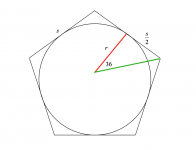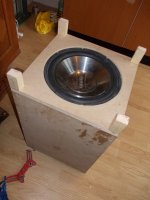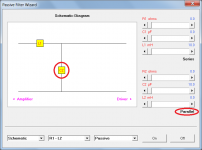Those look awesome! Please tell us more about them.On another note David, at 10,000 posts I'd like to thank you for a fantastic contribution you have made to the world of DIYAudio.
To celebrate I've attached some pictures of a more complex build that used Hornresponse to model several parts.
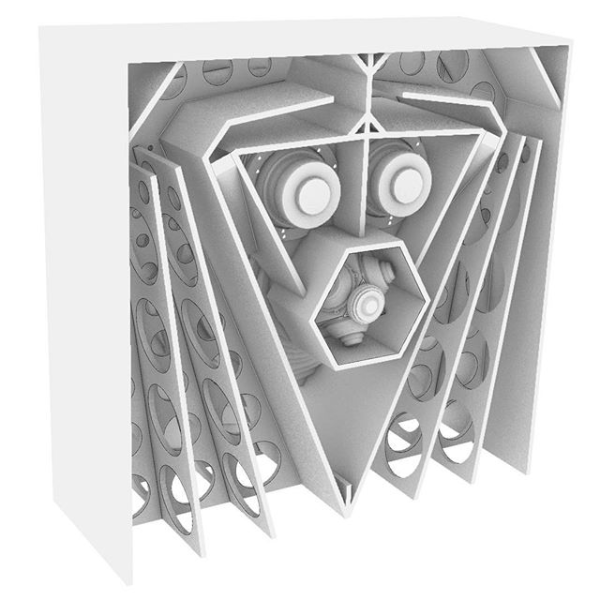
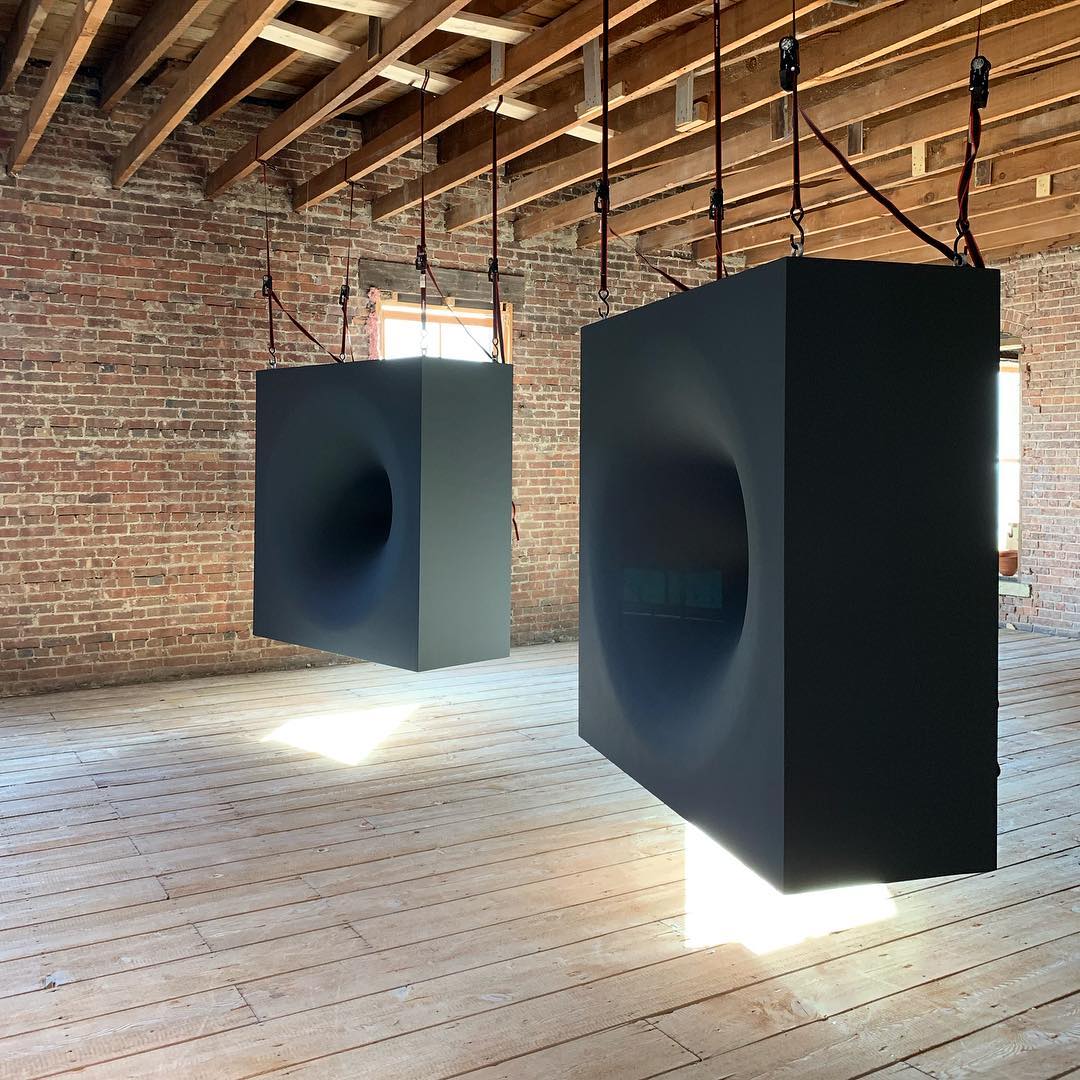
Thanks again for your efforts in continual development and support!
Hi Mårten,
Not really - just the 'Export Horn Data' section of the Help file.
Which data column names would you like clarified?
Kind regards,
David
is there an import/export file format specification?
Not really - just the 'Export Horn Data' section of the Help file.
But there are some weird data as well.
Which data column names would you like clarified?
Kind regards,
David
Those look awesome! Please tell us more about them.
Its a loudspeaker I designed for A For Ara, called H3.
All horn loaded, Hypex FA503. Sounds superb, goes very loud, complex build.
Hi MG,
Inradius - a circle having this radius will just fit inside the petal horn cross-section. A circular horn constructed using this radius can serve as a temporary former for assembling the petals around the outside.
Side Len - distance along the curved surface of the petal itself, for a given axial distance from the horn throat. This distance is required to be able to make the petal.
Width/2 - half the petal width at the distance given by 'Side Len'.
Each horn segment has its own section of data.
Kind regards,
David
the interior radius (I need help with this one) of the cross section in cm
Inradius - a circle having this radius will just fit inside the petal horn cross-section. A circular horn constructed using this radius can serve as a temporary former for assembling the petals around the outside.
the side length (I need help with this one) of the section in cm
Side Len - distance along the curved surface of the petal itself, for a given axial distance from the horn throat. This distance is required to be able to make the petal.
the width (square root?) of the cross section
Width/2 - half the petal width at the distance given by 'Side Len'.
I do not know why the data is broken up into multiple sections.
Each horn segment has its own section of data.
Kind regards,
David
@ D.McBean,
I noticed a couple things when playing around with the H-frame Wizard tonight.
1) If S1=S2=S5=S6, then phase response is plotted as zero.
2) Small changes in any of these areas results in 4 other unique phase plots. Attached pic shows changes with S1 and S2, but similar behavior is seen with S5 and S6.
3) There doesn't seem to be a way to export the pressure responses, only the power response. This may be as intended but thought I would mention it anyways.
Hi bolserst,
I need to investigate (1) further. The current model automatically calculates zero phase when sides 1 and 2 are identical - I am not sure why this should be the case. I think the results for non-identical sides 1 and 2 are correct though.
With regard to (3), the power response, electrical impedance and diaphragm displacement results can be exported. The pressure response wasn't added because it only applies to dipole loudspeakers.
Kind regards,
David
Hi William,
Thanks for the thanks 🙂. Ten thousand posts! That's crazy - who would have thought... 🙂.
Wow - nice system!
Kind regards,
David
at 10,000 posts I'd like to thank you
Thanks for the thanks 🙂. Ten thousand posts! That's crazy - who would have thought... 🙂.
To celebrate I've attached some pictures of a more complex build
Wow - nice system!
Kind regards,
David
Its a loudspeaker I designed for A For Ara, called H3.
All horn loaded, Hypex FA503. Sounds superb, goes very loud, complex build.
1.5 meters square I'm guessing?
I'm trying to help out by setting this up. I plan on turning it over to David. If he doesn't want it, then I am fine. It is interesting that I am getting slapped for being nice and pitching in. No good deed ever goes unpunished.
My fault guy, I didn't mean the situation was negative on your part. You shouldn't be the ONLY one posting. Yesterday was my 1st time ever going to reddit. I joined just for Hornresp.
Hi MG,
Thanks for taking the trouble to create the reddit page, but I have been using this diyAudio thread for so long now that I would find it difficult to make any change - it is hard to teach an "old dog" new tricks 🙂. Besides, the last thing I need right now is more work and/or responsibility as an Administrator/Moderator. I am busy enough already…
Kind regards,
David
No problem. I will park the subreddit for future use. It will be around for you if you ever get breathing room. The important thing to note is that it's yours. It might be a good idea to go ahead and make a reddit account so I can make you moderator. That way if I die it won't be like so many other subreddits and be unuseable. Shoot me a PM with your reddit account name. It will only take a moment.
That way if I die it won't be like so many other subreddits and be unuseable.
At my age, I suspect that I am much more likely to "fall off the perch" before you do, so there is probably little to be gained in getting me involved with reddit at this stage. I think I will just stick with what I am comfortable with - diyAudio 🙂.
Inradius - a circle having this radius will just fit inside the petal horn cross-section.
The 'Inradius' value is the length of the red line shown in the attached cross-section of a 5-petal horn.
The 'Radius' value (also given in the exported data for a petal horn) is the length of the green line.
Attachments
I noticed today that hornresp refuses to start if the dpi setting is not 100% or 125%, any chance to lift that ban? I don't mind if the layout is funky as a result 🙂
I don't mind if the layout is funky as a result 🙂
Hi 3ll3d00d,
You mightn't, but I do 🙂.
The schematic diagrams are no longer true to scale and the Help file does not display correctly. Labels on some of the forms are partially obscured and the waveform simulator doesn't work properly. All in all, the forms making up the program become quite messy one way or another.
In other words, it's not going to happen 🙂.
Kind regards,
David
It appears that I am unable to download Hornresp trough the hornresp.net website.
What's up with that?
Any other download locations?
What's up with that?
Any other download locations?
Glad to see this model for defining the effective path length between front and rear sources of dipole woofers has finally made it into Hornresp. As usual, you did a great job of cleanly inserting/implementing it into the existing Hornresp framework 🙂. I have found it to closely match low frequency measurements for H-frame as well as flat baffle dipoles. Additionally, the flat baffle results match nearly perfectly with those calculated using BTM diffraction methods.
For those unfamiliar with the acoustic center concept, a pictorial description is shown in Attachment #1. Basically, at low frequencies (baffle and driver are small relative to the wavelength) the source can be treated as a point. However, polar measurements indicate that this point source is not located at the driver cone but rather a distance in front of the baffle/driver. The distance to the acoustic center is mainly defined by the size of the baffle, but is also affected by the size of the driver, and the depth of the cabinet. John Vanderkooy’s set of papers in JAES on the acoustic center concept for loudspeakers at low frequencies was the main technical source for the model. Many thanks to mwmkravchenko for help in tracking down these papers and many of the references. For Hornresp implementation, the concept was extended to account for mirroring of the source and enclosure/baffle as you move from 4-Pi space to more restrictive radiation spaces.
As a brief example, here are some measurements I took earlier this spring for a Peerless SLS-12 woofer in a 64 liter sealed enclosure and a short H-frame compared to Hornresp.
Attachment #2: Before taking outdoor measurements, I grabbed a few measurements of the H-frame cavity resonance. I was curious how well the Hornresp radiation impedance model worked for different radiation spaces. Looks pretty good to me. 4-Pi measurement was with H-frame on stand in middle of garage. 2-Pi was with H-frame on the floor. 1-Pi was with H-frame on floor up against one wall.
Attachment #3: Moving outdoors, I took measurements of the same SLS-12 woofer in a sealed enclosure and H-frame at a distance of 2m. Although wind was causing more LF noise than I would have liked, you can clearly see that the level of the LF pressure response calculated by Hornresp for the H-frame lines up very well with the measurements relative to the sealed response. This indicates that the calculated path length between sources is correct.
Attachment #4: Note that the power response for the H-frame in Attachment #3 is roughly 4.8dB below the measured on-axis pressure response. This is because of the DI (Directivity Index) inherent in dipole sources. In other words, a dipole source will measure 4.8dB louder on-axis than a monopole source of the same strength. Or conversely, for the same on-axis SPL level, a dipole source radiates less total acoustic energy into the room than a monopole.
I have build now a closed box and c o build a dipole with 2 x wsp26s woofers, try to get cardioid effect with both as seen on pic.
David, I did try the filtering passief into hornresp, are you shure these works oke? because I see serial all the way there, but need coil series, and cap parallel for low pass.
Thanks for bolsert, for your measurements, nice stuff.
David, how long may be a bassreflex port be? I get 40 cm length and 10 cm accros is 78 and some cm3 for 12 inch low vas woofer.
The sub does fire on the floor, that works nice here in the small room.
thanks
Attachments
Last edited:
Hi Kees,
Double-click on a 'Series' label to change it to 'Parallel', as shown in the attachment.
A 40 cm bass reflex port tube seems reasonable to me, but others with more practical experience in such matters may care to comment further.
Kind regards,
David
I did try the filtering passief into hornresp, are you shure these works oke? because I see serial all the way there, but need coil series, and cap parallel for low pass.
Double-click on a 'Series' label to change it to 'Parallel', as shown in the attachment.
how long may be a bassreflex port be? I get 40 cm length
A 40 cm bass reflex port tube seems reasonable to me, but others with more practical experience in such matters may care to comment further.
Kind regards,
David
Attachments
Hi Sabbelbacke,
If you happen to read this message, just to check I tried downloading a copy of Hornresp after seeing the post by Hofmann below, and experienced a similar problem to the one we discussed recently. This time I received the attached message. After several attempts I finally managed to download a workable copy of Setup.exe.
I don't know if Hoffmann had the same problem as me, but it seems that odd things are still happening from time to time with the downloads, and that the issue now doesn't appear to be confined just to myself.
Kind regards,
David
If you happen to read this message, just to check I tried downloading a copy of Hornresp after seeing the post by Hofmann below, and experienced a similar problem to the one we discussed recently. This time I received the attached message. After several attempts I finally managed to download a workable copy of Setup.exe.
I don't know if Hoffmann had the same problem as me, but it seems that odd things are still happening from time to time with the downloads, and that the issue now doesn't appear to be confined just to myself.
It appears that I am unable to download Hornresp trough the hornresp.net website.
Kind regards,
David
Attachments
David, the problem for me was on my side.
It appears that the computers at work are protected against downloading certain filestypes. So I won't be designing any speakers during my lunchbreak 😀
It appears that the computers at work are protected against downloading certain filestypes. So I won't be designing any speakers during my lunchbreak 😀
It appears that the computers at work are protected against downloading certain filestypes.
Hi Hofmann,
Many thanks for clarifying what the problem was. It doesn't surprise me that you couldn't download Hornresp at work. Most companies are very wary of allowing executable files such as Setup.exe to be downloaded, just in case they are malware, and try to take over the business 🙂.
Kind regards,
David
- Home
- Loudspeakers
- Subwoofers
- Hornresp
